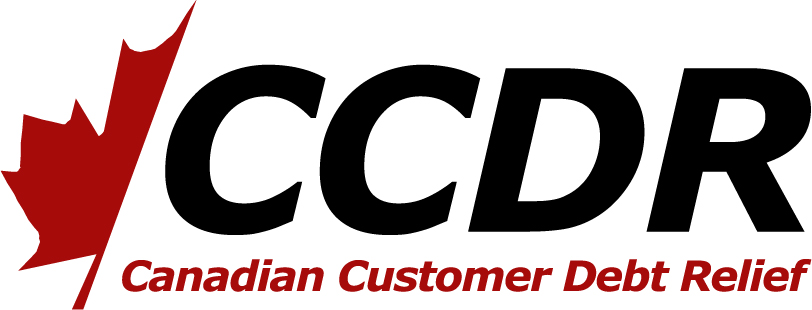Retirement
Getting Rid of Debt Before Retirement in Canada
Retirement is a phase of life most Canadians look forward to, dreaming of days without deadlines, meetings, or work stress. But what if the looming specter of debt clouds your hard-earned retirement? Well, worry not. This article will guide you through achieving a debt-free retirement in Canada.
The Necessity of a Debt-Free Retirement
Entering your golden years with a pile of debt can be a massive strain on your retirement savings. You’ve worked diligently to enjoy this period, so why let debt ruin it? Moreover, without a regular income, managing debt can be a daunting task. Thus, it’s crucial to get rid of your debt before retiring.
Understanding the Types of Debt
Before planning your debt elimination, it’s essential to understand the different types of debt that you might be dealing with.
Credit Card Debt
This is one of the most common forms of debt. High-interest rates can make it a significant burden if not promptly addressed.
Mortgage Debt
While having your house paid off by retirement is ideal, it isn’t always possible. Still, reducing this debt can significantly decrease your financial stress.
Auto Loans
If you’re still paying off your car, consider if it’s necessary. It might be worth considering if public transportation or a cheaper vehicle can serve your needs.
The Impact of Debt on Retirement
Carrying debt into retirement isn’t just about numbers. It can have far-reaching implications.
Financial Implications
Debt can drain your retirement savings, limiting your ability to enjoy the retirement lifestyle you’ve dreamed of.
Psychological Implications
The stress from debt can impact your mental health, diminishing your overall quality of life during retirement.
Strategies to Overcome Debt
The road to a debt-free retirement may seem challenging, but various strategies can help you overcome your debt.
Debt Consolidation
This involves combining all your debts into one, often with a lower interest rate, making it easier to manage and pay off.
Debt Settlement
With debt settlement, you negotiate with your creditors to allow you to pay a lump sum that’s less than what you owe.
Filing for Bankruptcy
While this should be your last resort, in extreme cases, filing for bankruptcy can help eliminate debt. Be sure to consult with a financial advisor before making this decision.
How CCDR Can Assist in Your Journey
At Canadian Customer Debt Relief Inc. (CCDR), we’re committed to helping Canadians like you overcome debt. With our A+ BBB rating and over two decades of experience, we’ve assisted countless individuals in navigating their path to a debt-free retirement.
Importance of Early Planning
The earlier you start, the easier it’ll be to handle your debt.
Setting Up a Budget
Creating and sticking to a budget can help you manage expenses and save more.
Increasing Your Income
Consider part-time jobs or freelancing to earn extra income that can be put towards paying off debt.
Investing Wisely
Investments can be a great source of passive income if done wisely.
Conclusion
Retirement should be a time of relaxation, not financial stress. Planning early and wisely can rid yourself of debt and pave the way for a peaceful retirement. CCDR is here to help you in this journey toward a debt-free retirement.
FAQs
1. What is the most common type of debt among retirees?
Credit card debt is often the most common, followed by mortgage debt.
2. Is it too late to plan a debt-free retirement in my 50s?
No, it’s never too late to start planning. However, earlier planning can give you more options and flexibility.
3. Can CCDR help with all types of debts?
Yes, CCDR assists with most types of unsecured debt.
4. What are the psychological impacts of debt in retirement?
Debt in retirement can lead to stress, anxiety, and even depression due to financial insecurity.
5. How can investing help in achieving a debt-free retirement?
Investing can provide a source of passive income that can be used to pay off debt.
Saving for Retirement in Canada
Saving for retirement is an incredibly important part of successfully planning for your future, especially if you live in Canada. There are a lot of options available, and they can help you build up the funds that will allow you to retire comfortably. In this blog post, we’ll go over some of these different options so that you know exactly how to get started saving for your golden years!
Saving for retirement is important no matter where you live in the world.
Saving for retirement is important no matter where you live in the world. If you don’t save, then you won’t have enough money to last until the end of your life.
Saving early is one of the best ways to ensure that you’ll have enough money in retirement to cover all of your expenses. The earlier you start saving, the more time it has to grow. This means that if you start saving at 25 years old, your savings will be able to grow faster than if you started at 35 or 45 years old. To help put this into perspective:
- If you save $500 per month from age 25 until 65 years old and earn an average annual return on investment (ROI) of 5%, then by age 65, this would translate into about $330,000! That’s a lot more than if someone starts saving only five years later at age 30 and then stops contributions altogether after retiring at age 65 (which is actually quite common).
- Alternatively, if someone started contributing just $50 per month starting at age 25 years old but stopped making contributions altogether once they retired at 65 – again assuming average investment returns over those 40 years – they’d still end up with only $28,000 in total savings by retirement day!
Many Canadians benefit from a workplace pension plan.
Many Canadians benefit from a workplace pension plan. In fact, about two-thirds of all Canadians have an employer-sponsored pension plan. This is one of the best ways to save for retirement because your contributions are matched by your employer, and some employers also offer additional contributions.
Workplace pensions are required to meet certain standards, such as offering lifetime income options and having enough money set aside to pay out benefits when they’re due.
The Canada Pension Plan (CPP) provides pension benefits to retirees.
The Canada Pension Plan (CPP) provides pension benefits to retirees. CPP is a mandatory pension plan for most workers in Canada. It covers nearly all employees and self-employed persons who work in Canada and make regular contributions, either through voluntary deductions from their pay or by paying directly into the plan. If you don’t contribute to the plan, you will not be eligible for CPP benefits when you retire.
CPP provides monthly benefits to eligible workers after they retire, become disabled or die. These benefits are based on your earnings history and how long you contributed to the plan.
The Old Age Security (OAS) provides another important source of retirement income for many retirees.
The Old Age Security (OAS) provides another important source of retirement income for many retirees. OAS is a monthly payment from the government that’s available to Canadian citizens who are 65 years or older and currently living in Canada.
If you live in Canada, you can apply for OAS regardless of whether you’ve ever worked in Canada or not. However, if you were born outside of Canada and became a Canadian citizen after age 18 (or 21 if born before 1947), the earliest date that your OAS could begin is July 1st of the year following your 60th birthday.
The good news about OAS is that it’s not taxable income! That means no matter how much money comes from your pension plan(s) or other investments, any amount received from OAS will be deducted from what is owed by the government at tax time—it won’t count against your taxable income at all! The bad news: while these payments are not considered taxable income by Revenue Canada, they’re still counted toward determining eligibility for other benefits like Employment Insurance and Guaranteed Income Supplement (GIS). This can have an impact on whether those sources will pay out enough money so as not to affect other benefits such as CPP disability insurance or provincial health care coverage premiums.
The Registered Retirement Savings Plan (RRSP) is an account that will help you save and invest for retirement.
The Registered Retirement Savings Plan (RRSP) is an account that will help you save and invest for retirement. Contributions are made with after-tax money and the amount of your contribution is deducted from your taxable income. The amount you contribute to your RRSP will be based on your eligibility, which depends on how much you earned in the previous year. For example, if you earned less than $46,605 in 2018 ($52,923 combined income if married or common law), then your maximum contribution is 18% of your net income up to $26,230 ($29,040 combined income if married or common law). However, these limits can vary depending on whether you have unused contributions room from previous years and provincial tax rates.
For each year that you make contributions before April 1st following any given tax year (e.g., 2019), there’s a grace period until December 31st during which time withdrawals aren’t taxable; however when withdrawing funds after this deadline without incurring penalties requires being over 71 years old or having financial need related to purchasing a home or paying medical expenses . You may also be able to transfer some of the investment earnings into an RRIF – Registered Retirement Income Fund at any time without penalty; however this option requires starting mandatory withdrawals within seven years after opening one up
Tax-Free Savings Account (TFSA) helps you save and invest without paying tax on your earnings.
The TFSA is a savings vehicle that lets you invest your money without paying any tax on your earnings. While it’s similar to an RRSP in that it’s meant for long-term saving and investment, there are a few major differences:
- You can use the TFSA for short term goals like saving for a car or house, as well as retirement.
- Unlike an RRSP, there are no age restrictions on when you can start contributing to your account (but if you withdraw money before age 65, it will count towards your income).
- You won’t be taxed when withdrawing from your account, but if you sell shares outside of the account they will be taxed as capital gains which means they may be subject to higher rates than normal income tax rates.*
There are a lot of options for saving for retirement in Canada and it’s important to take advantage of them!
There are a lot of options for saving for retirement in Canada, and it’s important to take advantage of them! For example, if you’re eligible, you can contribute to an RRSP (Registered Retirement Savings Plan), which is a tax-deferred savings plan where you get a tax refund on your contributions. You can also save in an RESP (Registered Education Savings Plan), which will help pay for post-secondary education. And there are many more kinds of plans available!
The Canada Revenue Agency has some great tools on their website that can help you figure out how much money you’ll need when the time comes to retire. They even have calculators that will tell you how much should be saved each month so that by the time retirement arrives, there will be enough saved up to last until death or old age!
Conclusion
Canada has many great retirement savings options for Canadians. It is important to take advantage of these options so that you can save up for your retirement years and enjoy them!
How Much Money do you need for retirement in Canada?
Retirement is something that few people think about in their 20s and 30s and a large segment of the population around 50 isn’t really sure what they need to do to fund their retirement years. While there are many variables that come into play, one way is to figure out approximately how much money you will need in retirement. A good rule of thumb is this: in today’s dollars, you will need a minimum $1 million dollars to comfortably retire in Canada. To get to $1 million at retirement, assuming you make $50,000 per year, you should try to save at least 15% per year (if you start in your early 20s); if you start later, say in your 30s, try saving closer to 20%. If it’s still early enough for you (say under 40), then saving closer to 25-30% per year would be better!
Retirement is something that few people think about in their 20s and 30s and a large segment of the population around 50 isn’t really sure what they need to do to fund their retirement years.
It’s important to remember that retirement is a long way off for most people. At this point in your life, you’re probably thinking about getting through the next day, let alone planning for retirement. But if it’s not on your radar yet, it will be soon. You’ll find yourself thinking about saving money with every paycheck or maybe even setting up an automatic transfer from your checking account into a savings account when each paycheck hits.
The earlier you start saving money for your future self (retirement), the more time it has to grow and compound into something significant by the time you retire. If you wait until later in life to start saving for retirement without any previous contributions, then expect to have less money at that time—which means fewer options available to help fund those years when they come around! So while there aren’t any hard deadlines or cutoff dates where once passed there’s no going back (unless we’re talking about investing in crypto-currencies here), there are definitely advantages if done sooner rather than later.
While there are many variables that come into play, one way is to figure out approximately how much money you will need in retirement.
While there are many variables that come into play, one way is to figure out approximately how much money you will need in retirement.
In order to determine this, you will need to know what your living expenses will be once you stop working full-time. This includes housing costs and utility bills as well as any medical expenses that may arise. You should also consider transportation costs if you plan on continuing with a car payment or other regular expenses such as insurance premiums or memberships for sports clubs or gyms (if applicable).
Once you have an idea of how much money is necessary for each month in retirement, multiply it by the number of months per year (12) and then divide by 12 again to get an annual amount needed per month:
A good rule of thumb is this: in today’s dollars, you will need a minimum $1 million dollars to comfortably retire in Canada.
The rule of thumb is to save 15-20% of your income. The more you can save, the less likely you will need to worry about how much money do I need for retirement in Canada. If you are saving this amount every month, even if it’s small, then it adds up over time. You should also think about investing that money in ways that will grow and eventually make enough interest so that you can live off of the investment alone.
If we follow those steps and invest properly, then a good rule of thumb is this: in today’s dollars, you will need a minimum $1 million dollars to comfortably retire in Canada (and maybe even more depending on where).
To get to $1 million at retirement, assuming you make $50,000 per year, you should try to save at least 15% per year (if you start in your early 20s); if you start later, say in your 30s, try saving closer to 20%.
To get to $1 million at retirement, assuming you make $50,000 per year, you should try to save at least 15% per year (if you start in your early 20s); if you start later, say in your 30s, try saving closer to 20%.
For example: If a person is saving 15% of their income for the next 40 years and earns a 5% annual return on their investments (after fees), they’ll be able easily reach their goal. If that same person were only earning 2% instead of 5%, they would have to save as much as 22%.
Now let’s say that after 50 years of work and saving up an average of just over $1 million dollars (which is not unreasonable given how high house prices can be), we want our money invested so that it will grow over time while providing some income each month.
If you are entering your 40s with just a few thousand in savings, don’t worry too much – it’s better late than never! You can still save 15-20% of your paycheque each year and after 10 years, it will add up very nicely!
If you are entering your 40s with just a few thousand in savings, don’t worry too much – it’s better late than never! You can still save 15-20% of your paycheque each year and after 10 years, it will add up very nicely!
In fact, if you have been making steady contributions to your RRSP over the past 10 years (and have not withdrawn any money), then I would bet that you have more than enough assets to retire tomorrow. Let’s say that at age 45, your assets total $200k in stocks and bonds. Assuming an annual return of 5%, this would grow to $638k by age 55. If we assume that all these funds are invested conservatively (as opposed to taking on more risk) then at age 55 this portfolio could generate income of 8% per year ($52k). This means that even though our hypothetical investor has saved only $200k over the past decade (and did not take any withdrawals from their RRSPs), they could now retire comfortably at 55 without ever having contributed another cent!
Conclusion
After looking at the numbers and how much money you need for retirement, it is clear that if you want to retire comfortably, then you need to start planning early in life. A good rule of thumb is this: in today’s dollars, you will need a minimum $1 million dollars to comfortably retire in Canada. To get there at retirement age (average 65 years old), assuming your income doubles each year due to inflation, then it will take 10 years to save up enough money if you start saving 15% per year; if starting later than 30 years old then 20% per year would be necessary. If entering into your 40s with just a few thousand dollars saved up – don’t worry too much! You can still save 15-20% of your paycheque each year and after 10 years it adds up very nicely!



